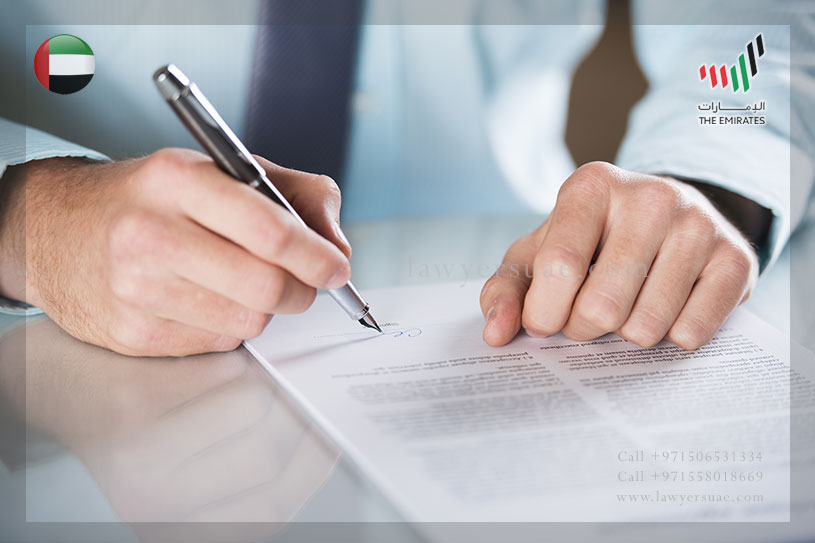Працоўнае месца траўмы are an unfortunate reality that can have significant impacts on both супрацоўнікаў і працадаўцы. This guide will provide an overview of common працоўнае месца траўма causes, prevention strategies, as well as best practices for handling and resolving incidents when they occur. With some planning and proactive measures, businesses can reduce risks and facilitate safer, more productive працаваць асяроддзяў.
Common Causes of Workplace Injuries
There are a variety of potential аварыя і траўма hazards present in work settings. Being aware of these can help guide preventative efforts. Агульны causes include:
- Slips, trips and falls – Spills, cluttered floors, poor lighting
- Траўмы пры ўздыме – Improper manual handling techniques
- Пашкоджанні пры паўторных рухах – Continual bending, twisting
- Machine-related injuries – Lack of guarding, improper lock out
- Сутыкненні транспартных сродкаў – Distracted driving, fatigue
- Гвалт на працоўным месцы – Physical altercations, armed assaults
Costs and Impacts of Workplace Injuries
Beyond the clear human impacts, працоўныя траўмы also bring costs and consequences for both рабочыя і бізнес. Яны могуць ўключаць у сябе:
- медыцынскія выдаткі – Treatment, hospital fees, medications
- Страціў прадуктыўнасць – Absenteeism, loss of skilled staff
- Higher insurance premiums – Workers’ compensation rates rise
- Юрыдычны збор – If claims or disputes are filed
- Выдаткі на найм – To replace injured staff members
- Fines and violations – For failing safety regulations
Прадухіленне няшчасных выпадкаў up front is crucial to avoid these negative effects and maintain a productive, safe працаваць навакольнае асяроддзе.
Legal Responsibilities for Workplace Health and Safety
There are clear legal obligations around ахова працы aimed at protecting супрацоўнікаў and encouraging injury prevention. In most jurisdictions, these responsibilities fall on працадаўцы and managers. Some key requirements include:
- Conducting hazard ацэнкі and reducing risks
- Providing safety policies, procedures and навучанне
- Ensuring use of personal protective абсталяванне
- Reporting and recording няшчасныя выпадкі на вытворчасці
- Facilitating return to work and accommodations
Failure to meet these obligations can lead to regulatory fines, policy violations, and potential lawsuits if траўма cases are mishandled.
“The greatest responsibility of any бізнес заключаецца ў забеспячэнні бяспеку яго супрацоўнікаў.” - Генры Форд
Cultivating a Strong Safety Culture
Establishing a robust safety culture goes beyond formal policies and checks the box requirements. It requires demonstrating authentic care for персанал well-being and backing this up management actions including:
- Promoting open communication around safety
- Conducting regular safety meetings and huddles
- Encouraging injury reporting and transparency
- Incentivizing identifying hazards and suggesting improvements
- Celebrating safety milestones and achievements
This helps engage рабочыя, gain buy-in to reinforce safe behaviors, and continually enhance the працоўнае месца.
Top Injury Prevention Strategies
The most effective approach combines various techniques tailored to specific працоўнае месца небяспекі. Агульны components of a comprehensive prevention program include:
1. Regular Safety Assessments
- Inspect facilities, machinery, exits, lighting, and storage areas
- Review safety incident data and injury trends
- Identify risks, code violations, or emerging concerns
- Have health and safety staff evaluate more technical aspects
2. Strong Written Policies and Procedures
- Outline required safety practices, equipment use guidelines
- Standardize processes to reduce risks
- Provide mandatory training on standards
- Update regularly as regulations or best practices evolve
3. Effective Staff Training
- Onboarding and new hire orientation around safety protocols
- Specific instruction for equipment, hazardous materials, vehicles
- Refreshers on policies, new incidents, inspection findings
4. Machine Safety and Guarding
- Install barriers and guards around dangerous machinery
- Implement lock out tag out procedures for maintenance
- Ensure emergency shutoffs are clearly labeled and functional
5. Provide Personal Protective Equipment (PPE)
- Conduct hazard assessments to identify needs
- Supply gear like helmets, gloves, respirators, hearing protection
- Train workers on proper use and replacement schedule
6. Ergonomic Assessments and Improvement
- Have trained ergonomists evaluate workstation design
- Identify risks for strains, sprains, repetitive injuries
- Implement sit/stand desks, monitor arms, chair replacements
“There is no cost you can put on a human life.” – H. Ross Perot
Ongoing commitment to injury prevention protects both здароўе супрацоўнікаў і бізнес itself over the long-term.
Immediate Response Steps for Workplace Injuries
Калі аварыя does occur, it is vital to respond swiftly and effectively. Key first steps include:
1. Attend to the Injured Party
- Call emergency services immediately if required
- Administer first aid care only if properly qualified
- Do not move injured worker unless critical
2. Secure the Scene
- Prevent further injuries from occurring
- Take photos/notes of accident area before cleaning
3. Report Upwards
- Notify supervisor so help can be dispatched
- Identify any immediate corrective actions needed
4. Complete Incident Report
- Record critical details while facts are still fresh
- Have witnesses provide written statements
5. Звярніцеся па медыцынскую дапамогу
- Arrange qualified transportation to hospital/doctor
- Do not let worker drive themselves while injured
- Provide contact info for follow up support
Notifying Workers’ Compensation Insurer
For work-related injuries needing medical treatment, prompt insurance notification is legally required, often within 24 hours. Provide initial details like:
- Employee name and contact data
- Supervisor/manager name and number
- Description of injury and body part
- Date, location and time of incident
- Actions taken so far (transport, first aid)
Cooperating with insurer investigations and providing supporting documentation is key for timely claim processing.
Conducting Investigations into Root Causes
Analyzing underlying reasons behind workplace safety інцыдэнтаў provides actionable insights to prevent recurrences. Steps should include:
- Агляд equipment, materials, PPE involved
- сумоўе injured worker and witnesses separately
- Агляд existing policies and task procedures
- Вызначэнне gaps, outdated practices, lack of training
- Дакументаванне investigation findings in reports
- Абнаўленне standards and controls accordingly
Uncovering root causes, even for near misses or minor events, is crucial for driving continual safety improvements over the long term.
Supporting Injured Staff Recovery and Return to Work
Helping injured staff through medical and rehabilitation processes promotes healing and productivity. Best practices involve:
1. Designating a point person – to coordinate care, answer questions, assist with paperwork
2. Exploring modified duties – to enable earlier return to work with restrictions
3. Providing transportation help – if unable to commute normally post-injury
4. Offering flexibility – to attend appointments without penalty
5. Protecting seniority and benefits – during medical leave periods
A supportive, communicative process focused on the рабочага needs speeds recovery and return to full capacity when able.
Preventing Recurrences and Continuous Improvement
Every incident offers learnings to enhance safety programs. Steps should include:
- Перагляд existing policies and procedures
- Абнаўленне risk assessments based on new issues identified
- Асвяжальны staff training content where knowledge gaps surfaced
- Engaging workers for suggestions to improve safety
- Standardizing processes so new hires learn properly
Workplace safety requires diligence and continuous evolution to account for changing operations, regulations, equipment and staff.
Safety Program Fundamentals
Пакуль кожны працоўнае месца faces unique hazards, some foundational elements apply across all effective safety protocols including:
- Ідэнтыфікацыя небяспекі – through inspections and reporting
- Risk evaluations – assessing likelihood and severity
- Written standards – clear, measurable policies and plans
- Сістэмы навучання – onboarding and ongoing skills building
- Абслугоўванне абсталявання – preventative upkeep and replacement
- Ўлік – tracking incidents, corrective actions
- Culture of care – workplace climate focused on staff health
Using these pillars as a guide, organizations can develop comprehensive solutions tailored to their particular навакольнае асяроддзе.
“Safety and productivity go hand in hand. You cannot afford not to invest in safety.” – DuPont CEO Charles Holliday
When Additional Help is Needed
For more serious incidents, specialist expertise might assist internal teams including:
- Юрысконсульт – for disputes, liability concerns, claims management
- Workers’ compensation experts – assist with insurance processes
- Прамысловыя гігіеністы – evaluate chemical, noise, air quality risks
- Эрганамісты – examine repetitive strain and overexertion factors
- Construction safety consultants – inspect sites, equipment issues
- Security advisors – provide guidance on violence, theft risks
Tapping external, independent perspectives can shed light on overlooked factors and area for safety program improvement.
Часта задаюць пытанні
What are my legal obligations around reporting workplace injuries?
- Most jurisdictions require reporting severe incidents involving hospitalization or death to relevant occupational health and safety authorities within set timeframes. Recordkeeping and internal reporting procedures also typically apply.
What makes an effective return-to-work program?
- Modified duties based on medical limitations, designated coordinators, flexibility around appointments, and protecting seniority/benefits during medical leave. The goal is facilitating productivity and recovery simultaneously.
How often should I review my workplace safety policies?
- Annually at minimum, as well as any time procedures are added or changed, new equipment is used, materials change, or safety incidents occur. The aim is continuous evolution to match operational realities.
What are warning signs I may need to involve legal counsel regarding an injury?
- If disputes arise around cause of injury, severity, appropriate compensation, or allegations of safety negligence or liability. Complex cases involving permanency, death or regulatory fines also often benefit from legal expertise.
Патэлефануйце нам зараз, каб тэрмінова запісацца на прыём па адрасе +971506531334 +971558018669


